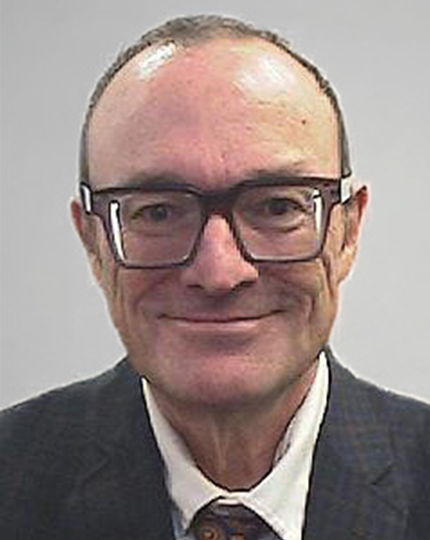Biomarker is an elastic term
A history-of-oncology buff might argue that the granddaddy (grandmammy?) of all biomarkers is the estrogen receptor, which was discovered in the late 1950s. While it’s true that by then, Charles Huggins had figured out a link between testosterone and prostate cancer, there wasn’t much awareness of the cell surface interactions that were taking place in endocrine-driven tumors. Tamoxifen was synthesized not long after the estrogen receptor characterization in the early 1960s, initially with the intent to be used as a contraceptive pill. However, studies soon showed it to be ineffective — in fact, surprisingly counterproductive — for that indication. And so began its rebirth as the first targeted cancer therapy.1
A lot more has been learned about numerous other biomarkers in the last 60 years, and to some of us it feels like most of that knowledge has emerged in the last 60 minutes. There has been a head-spinning surge of new, clinically impactful scientific advances in this domain in the last decade. Hence the motivation for this issue’s theme.
In this ASTROnews, we apply a broad definition, considering biomarkers to be genetic tests on tumor tissue that reveal information about its expected behavior beyond what is known from the microscopic appearance; imaging methods apart from routine initial staging studies that characterize a diagnosis or prognosis or guide treatment; artificial intelligence technologies that reveal histologic nuances too subtle to be appreciated by the human eye; circulating serum proteins or cellular fragments that offer screening or predictive knowledge, or any other nouveau “omics” that sheds new light on the nature of a neoplasm.
We enlisted a team of topic experts to highlight the status quo of biomarkers in their protean roles across a spectrum of common cancers. They were given license to let their imagination roam free to convey a sense of the creative intellectual undercurrents that keep moving the field forward.
The astute reader will notice a few omissions, for which we apologize. For example, space constraints did not allow us to delve into the evolution of glioma classification, where in recent years the World Health Organization (WHO) has effectively transmogrified diagnostic criteria from an older system based on microscopic morphology to a nouveau nomenclature predicated almost entirely on molecular features (IDH mutations, TERT promoter mutations, ATRX status, 1p19q deletions, etc.) not visible to the naked eye. In the realm of endometrial cancer, we are only just beginning to appreciate the extraordinary implications of polE mutations, which turn upside down traditional pathologic features associated with progression and have sweeping implications for adjuvant therapy.2 And let’s not forget about rectal cancer, where the provocative results of the NO-CUT trial presented at ESMO last year suggest that ctDNA can be a powerful tool to predict outcomes after non-operative management.3
Nevertheless, we hope that the issue’s content offers a light-spirited look at the current implications of biomarker assays of all sorts and maybe a hint of what is to come, alongside maybe a few pearls here and there of value in weekly tumor boards for the practicing radiation oncologist.
And, as the outgoing Senior Editor, I pen my last note. It’s been a pleasure to co-edit this issue with Brian Kavanagh, who takes over as ASTROnews editor from the next issue. I’m certain he will lead the magazine to even greater heights. My gratitude to the contributors who write for us, taking time out from their extremely busy schedules to help communicate with the wider community, the importance of which can’t be overstated. My time here has been a truly rewarding experience, thanks in large part to the unstinting support of the Editorial Board and Staff, especially Diane Kean and Anna Arnone. Thanks to all of you — ASTROnews is testament to your dedication and talent.
Happy New Year from all of us.
Guest Editor
Carmen Bergom, MD, PhD
The Biomarker-Driven Future of Personalized Radiation Therapy
The field of radiation oncology is on the verge of a biomarker-driven revolution. We could have dedicated a textbook to newly established biomarkers as well as those on the horizon in radiation oncology. Instead, we have highlighted key developments and upcoming areas of interest in a few types of cancers, providing a landscape of select biomarkers currently used in practice and promising future biomarkers. Any doubt about how biomarkers are already starting to shape clinical practice should be shattered after reading the summaries in this issue. Although gradual advancements characterize the current biomarker landscape, our field will likely undergo a fundamental shift with the upcoming wave of breakthroughs, led by more and more -omic data (e.g., genomics, transcriptomics, proteomics, metabolomics), AI- and machine learning-guided discoveries, and the maturation of lines of research such as how the microbiome may influence cancer treatment responses and how to more effectively enhance anticancer immunity. The current biomarker innovations, whose effects are still in their infancy, foreshadow a future where biomarker-driven personalized cancer treatments are commonplace.
In this issue, we have mainly focused on how biomarkers will help to guide more effective antitumor treatments. Another way in which biomarkers may guide our treatments in the future is by determining normal tissue sensitivities in patients. For example, biomarkers predictive of a critical organ’s relative radiation sensitivity, such as the heart, may lead to altered dose-volume constraints for a patient with lung cancer, adjustments in radiation dose and fractionation, and/or the adoption of specialized techniques such as proton therapy. Conversely, biomarkers predicting radiation resistance in critical organs may provide clinicians with greater confidence to escalate doses if necessary. Furthermore, these biomarkers may inform survivorship surveillance guidelines, offering a more tailored approach to monitoring long-term outcomes.
While we have mostly focused on the immense promise of biomarkers in radiation oncology, the integration of biomarkers into clinical practice is not without difficulties. Chelain Goodman, MD, PhD, nicely summarized many of these challenges in her section on biomarkers for breast cancers. Another obstacle is the rapid pace of discovery and technology in this area, which risks limiting clinicians’ ability to stay current and underscores the need for ongoing education and collaborations between researchers and physicians. Ethical challenges also arise, such as how patients might react to learning about their biomarker profiles or the discovery of incidental findings unrelated to their diagnosis. Additionally, the cost of biomarker development and implementation risks deepening disparities in care, as not all patients or health care systems may have access to these advances. It is imperative to work to make these advancements available to all appropriate patients, regardless of socioeconomic status or geographic location.
Even with these challenges, biomarkers have the potential to reshape cancer treatment for the better. Success will require addressing these obstacles while ensuring that care remains focused on the patient as a whole. Biomarkers should enhance, and not replace, the physician’s role in tailoring treatment to individual needs. By integrating this technology with individual patient needs, radiation oncology can move closer to a future of more effective, equitable and personalized care.
References
- Jordan VC. Tamoxifen (ICI46, 474) as a targeted therapy to treat and prevent breast cancer. British Journal of Pharmacology. 2006 Jan;147(S1):S269-76.
- McAlpine JN, Chiu DS, Nout RA, et al. Evaluation of treatment effects in patients with endometrial cancer and POLE mutations: an individual patient data meta‐analysis. Cancer. 2021 Jul 15;127(14):2409-22.
- Amatu A, Zampino MG, Bergamo F, et al. Total neoadjuvant treatment with non-operative management for proficient mismatch repair locally advanced rectal cancer: First results of NO-CUT trial. ESMO Congress 2024. Abstract 509O. Presented September 16, 2024.




